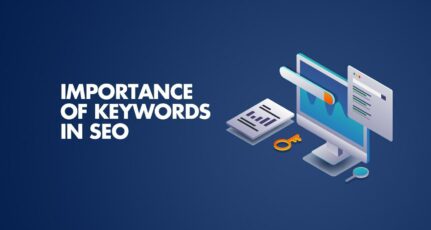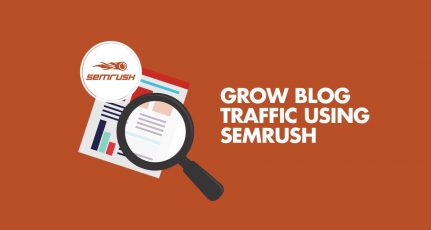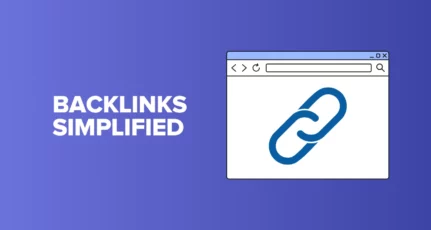
Google Panda was one of the most controversial algorithm updates from Google, but with time, it helped a lot to remove low-quality websites from search engine and improved the quality of the web.
Though for many webmasters, Google Panda updates are still a headache and at unknowingly many good websites lost their search engine ranking due to Panda penalty.
If you are one of those bloggers who lost their web site traffic after latest Google panda algorithm update roll out, Here I will be sharing tested tips to recover from Google Panda.
Before we move ahead with panda recovery tips, I would like you to know Google Panda is a domain level penalty.
What I mean is, if earlier you’ve had low-quality content, it was your content that was penalized, but now if you have low-quality content, your complete domain will be penalized. One of the simplest ways to get rid of Panda penalty is by getting rid of low-quality content.
I will do a separate post for identifying low-quality posts but here I will give you a brief idea that will help you get started with the recovery process.
We all know that Google rolled out the Google Panda algo globally, and you might also have noticed many bloggers talking about a traffic increase or significant traffic drop.
We always talk about SEO optimization of blog posts and since the Google Panda algorithm, it’s become mandatory to do proper SEO on the site level and content level.
In this post I will be talking about how to recover from Google Panda effect, and what you can do to better optimize your blog for the Google search engine, so that your blog will be bullet-proof from future Google Panda updates in 2018 and the coming years.
Panda is just an algorithm iteration, and as Matt Cutt, mentioned, now sites will also get penalized for over SEO optimization. So, I would suggest avoiding any black hat SEO (If you are doing it), and focus more on quality content and increasing your site’s social media presence.
Update: I have updated this article with new tips that I implemented on my websites and have seen a good recovery over time. Here is a screenshot of the same.

Before I move ahead with Google Panda recovery tips, let me tell you something about ShoutMeLoud traffic.
ShoutMeLoud was affected by the Google Panda algorithm, and the traffic drop was around 60%. I have always taken care of SEO, but at the initial days of blogging, when I was new to blogging, most of my content was short and of low quality.
We will look into a couple more factors that lead to Panda penalty for this site and other sites in my network.
One thing, in particular, Google Panda taught me was about the importance of keywords, and why you need to have a target keyword in a post. Just for the info, in this process, I recovered the traffic but as I mentioned, recovery was not 100%. Slowly it’s increasing, and by ranking for target keyword now I’m getting more targeted visitors.
As I mentioned above, Google Panda is a domain level penalty, so even a couple of bad content/posts can affect your overall blog ranking.
The very first step you need to do is figure out thin content or content that doesn’t add much value. For example, in the initial days of my blogging, I usually wrote posts with 30-50 words with one image and a link. Something, which I can say doesn’t add much value to readers. I guess this is the same dilemma with others too.
Often I found out I had many low-quality contents, thereby, I had a couple of choices: no-index them, delete them or update them with detailed information to make it a quality content, so that it would be helpful and useful to readers.
Anyways, before you find out more about recovering from the Google Panda algorithm change, first understand what kind of website Google Panda is going to affect.
- A website with low quality (Thin content)
- A website that works as content farm
- A website with useless pages indexed in Google (Same as content farm)
- A website with improper SEO structure
- Duplicate content (On-site and off-site)
- Too many advertisements
- Poor grammar
- Slow site loading time
- SEO over-optimization (Black hat SEO)
One easy way to find out if your site traffic drop is the result of Panda or something else is by analyzing traffic drop dates and matching it with the Panda update dates here
Here are some of the most common reasons for Panda penalty:
- Low-quality content: Too short, not well researched.
- Poor grammar (Still working on it) Sigh!
- Ad/content ratio
- Too many broken links (404 links)
- Less CTR from Search engines (Poor meta title, weak meta description tag)
There could be other factors, but these are something that needed instant attention. Most of the broken links and redirects were quickly fixed by the Broken link checker WordPress plugin.
Now before we move ahead, here are some factors you should know about Google panda:
- It’s a domain level penalty.
- A few low-quality posts can drop overall domain ranking.
- Google trust quality sites.
- Google Panda lowers down overall ranking of low-quality sites.
- On-site SEO optimization becomes important.
- The quality of a post is taken as a prime factor for ranking.
- Niche based websites are better than generic sites.
How to find out if the Google Panda algo affected your website?
This is the first thing that you should be doing as webmaster. The recent Panda update was rolled out on 23rd September 2014, go to your analytics and see the graphs for the date mentioned above and compare it with last 10 days. If you see a significant drop or rise in traffic, that means your website is getting the hiccups of the Google Panda effect. You can also use this link to sign up for a free-trial account of SEMRUSH, and there you can see the increase or decrease in your keyword ranking. (See below screenshot)

So if you are one of those who are seeing an increase in traffic, it’s time to take a break! Grab a coffee or have a gala time with your friends. But if you are one of those who were affected by the Panda effect, I suggest reading this post seriously, as you need to work hard to recover from Google Panda effect.
Steps to recover from Google Panda updates:
Write quality content:
I’m sure you’re tired of being told: “Write quality content and traffic will follow you.” When I say write quality content, it means to write a post that covers every aspect around the topic.
Your post should also be optimized for certain keywords and should not be just a random post. A quality post written without any targeted keywords is a useless post. You might get praise and lots of appreciation, but people won’t be able to find it in the search engine after some time.
Google takes quality and length very seriously, and there are certain things which you should keep in mind including the word count of your blog post. For example, a post like “How to recover from Google Panda” can be written in 5 simple steps or could be written in a detailed how-to guide like this.
Now, we know which one a reader would prefer, but what about a search engine?
When you write a detailed article, you cover more keywords, and especially you add more information into your post. According to an SEO debunked study, articles with longer length ranks reasonably well. I have even tested and verified this after I optimized many old blog posts.
LSI words:
Here is the food for thought: How do you think a search engine rank a content? Search engines use algorithms to decide post ranking. How do you think a search engine will give you exact results for your search query?
Here is where LSI words come into the picture, which helps search engines to understand exact categories for your article. Along with that, you use bold, italics, Keyword in H1, H2, and H3 tag to make your content more search engine targeted. You should maintain a certain ratio for Keywords density. I know it all sounds hard, but look at the screenshot below.

I use a combination of SEO writing assistant + Yoast SEO to optimize my blog posts.
Here is the search engine ranking of a keyword that I optimised after trying both the above solutions:

There are many other similar SEO plugins like this available: Prefer using a plugin that gives you on-page SEO score and keyword density score. This will certainly help in the long run.
Remove unnecessary pages/posts from Google search:

The very first step is to see what all pages or posts are part of Google, search from your domain. In the past, it was good to have more indexed pages, but now it’s essential to have only important pages and posts. Useless posts or pages just become a part of the search engine and doesn’t add values.
Especially if you have your tags indexed in Google, you might like to no index it, as Tags and categories don’t help search engine much. Imagine you used six tags within a post and have written 100 posts.
100*6 =600 tags (Assumption)
And now your tags are indexed in Google, imagine 600 low-quality pages being a part of search engine.
Same goes with disclaimer, privacy policy, newsletter page, which doesn’t add much value to the search engine. Y
ou might like to use noindex tag for such pages. You can search all indexed pages for your domain by typing Site:Yourdomain name.com in Google.com.
Don’t forget to go to the last page and click on show omitted results. As Google put possible duplicate and low-quality content from any domain under 2nd tier results.
You can use Yoast SEO WordPress Plugin to make your category/tags/date archive pages as noindex. Another tip which you should keep in mind: Always keep your internal links as Dofollow. Google suggests you to use noindex tag when you don’t want bots to index any page/post and Robots.txt to stop crawling admin and private part of a website.

You can do a quick search in Google with “Site:domain.com” to find out what all pages are indexed in Google from your domain. Replace domain.com with real domain name.
If your blog wp-content and wp-admin links are indexed in Google, simply use Google Webmaster URL removal tool and get rid of the complete directory. Make sure to add those directories into your Robots.txt file.
Remove Low-quality content:
Now in the past, you might have written posts which are not well written, very short or may be not targeted. Google is taking low quality content very seriously and therefore you should start working on your old low quality posts and convert them into high quality article.
At least work on SEO details and length of the article. This will also help you in the internal linking of your old posts with the new one. Personally every day, I spend 1-2 hour to work on old posts and make them better. Even if you are not hit by Panda effect, you should do it to make your blog look better and give more quality to your readers.
Now the most common question would be what is low quality content. There is no 100% guide for low quality content, but here are some guidelines for the same:
- Is it useful for readers?
- Is it well researched?
- Is content comes from a trustable source?
- How likely customer is willing to give credit card details?
And many more other factors. But for now, here are my brief guide to find low quality content on your site:
- In Google analytic, find all posts which got <10 visits in 2 months time. Now analyze content of the post and see if it’s useful and relevant. Depending upon the post, you can update or delete or noindex it.
- Find all articles with no Google traffic & optimize it.
- Find all posts that are giving bounce rate higher than 85%. Work on them to lower down bounce rate. You can use these techniques to improve the bounce rate.
- Install Admin word count WordPress plugin and analyze traffic of posts with word count <250. Take appropriate action depending upon the post.
Duplicate content:
Google takes duplicate content seriously even if it’s on your domain or cross posted on other site. Too many duplicate content will affect your search engine presence for sure. Work on each and every detail of your site structure and SEO and make sure you are not serving any duplicate content. As I mentioned above, Google takes plagiarism seriously but the algo is not mature to really figure out difference between original and copied content, you need to work manually to fight against plagiarism. Also make sure you are using URL canonicalization.
Though Google claims that their new Content farm algorithm is perfect to fight against Auto RSS content generation blog but to be honest I really doubt it. Especially for CallingAllgeeks, I have seen many auto blogs are copying content but they are ranking better than original article itself. More over because of this, many posts are getting deindexed from web search. The only solution to this is a fight against plagiarism.
You should taking plagiarism seriously and as soon as you see any website copying your content, you can report it to Google team. Initially I used to ignore such blogs which used to copy content, but these days I actively report them to Google and so far in last 15 days, I have put request to remove 50+ such pages from Google index and from BlogSpot. So far 75% of my request has been successfully reviewed and copied URL’s are removed from Google. You should straight away file a DMCA notice or ask the webmaster to remove the content instantly. Missing this point will create post duplication issue, and more over you might see other site is stealing your hard work and traffic.
Bonus tip: When you find out all your low quality content, find all copied posts using these plagiarism checker tools and report it to Google. I have seen many of such posts started getting traffic, once all copied content are removed.
Learn SEO:
If you are into professional blogging or planning to take blogging as a career, you should learn SEO first. Without SEO, your future will remain unpredictable, as one significant algo change can take away everything from you. Once you know the basics of SEO, you can be ready for any algorithm changes and tweak your website to meet new changes. Here are a few things which you should start with:
- Keyword research
- Keyword optimization
- How to build Backlinks
- On site SEO
- Robots.txt
- Social media promotion
SEO friendly WordPress Theme:
Thumb rule: In majority of cases, paid themes are well coded and get regular updates over free themes.
If you are using a free WordPress theme, you should check your theme for proper heading tags and if this theme is SEO friendly or not. Or else, make your life simpler and use Astra theme or Genesis theme. Especially, if you are not much of SEO guy, you can install these theme and make your blog more SEO friendly. Make sure you put noindex attributes for tabs, categories and all useless pages using Thesis options panel or Genesis option panel.
Social media promotion:
Alright, this is something which I’m sure many of you must be missing and believe me social media promotion really helps. Especially Facebook likes, Twitter and Pinterest worked great for me to boost my ranking. Though Twitter helps in faster indexing and that’s it.
You can always start with social media promotion by creating own group on Facebook or on IM. Else, you can hire any 3rd party sites which offer such services. I have optimized my old posts for a specific Keyword and then promoting them into these social media sites. I can see huge ranking improvement and you can try the same for any of your blog posts too.
External links:
If you are one of those who is selling paid links or doing paid reviews about anything, you should stop doing it.
Linking to the bad neighborhood may have a negative effect on your search engine ranking.
If for any reason you need to link to any bad site, use nofollow attributes. Same goes for an affiliate URL.
Though Google doesn’t give much weight to nofollow attributes, it does make a difference.
It’s a myth that too many external links will affect your ranking, if you are linking to legit and useful content it’s ranking will not go down or will not be affected.
So you have to take an extra precaution when you are linking to other sites, especially if you are running a multi-author blog, you should make sure that link or a guest post is coming from bloggers in the similar or relevant niche.
MFA or Affiliate blog:
If you run a money-making online blog, you’re probably using lots of ads and affiliate links. Top contributors on a Webmaster forum have said that too many ads on a page give out a signal of a low-quality website. Also if you run a blog for affiliate marketing with less original content, you are more likely to be affected by this algorithm.
You should try to use fewer ads on a page, and especially no ads in between a post. Also for affiliate links, strictly use nofollow links.
How to put reconsideration request after SEO change?

So you got affected by Google panda and your traffic dropped.
I hope by now, you have made the changes on your blog, now to make it more search engine friendly get rid of low-quality pages.
Once you are done with all the essential changes, it’s time to log in to Google search console and put a reconsideration request.
Though it takes time it’s the best thing which you can do now. Here is the link to the reconsideration page of Google. Though, in most of the cases, you will get a reply from Google saying your site is not penalized and there is no penalty, as new Panda algorithm is not a penalty but a new way to rank the website in search engine.
Bonus tip:
If in search meta description your date is showing, chances are high you will get very low CTR for old evergreen post. I have removed post date from 2 of my websites and I could see improved CTR. Moreover, one of tech blog which was badly hurt recovered really fast after date removal from search snippets. Also if you are running a review site, like a gadget review, make sure to install GD star rating plugin and enable star rating. This will again help in improved CTR from Google search. Needless, to mention Google authorship, which is going to make everything very social.
NutShell:
Following changes worked for me to recover from Google panda effect:
- Removed data from search engine snippets
- Removed all Broken links
- Removed un-necessary pages from search (Noindex or 404)
- Keyword optimization for all old posts (Improved the quality with updated info)
- Social media promotion after Keyword optimization (Google+, Delicious, Digg)
- Removed duplicate content
- URL Canonicalization ( replytocom, Feedburner links)
Thoughts about Panda:
One thing that everyone should remember is that Google doesn’t impact the site manually (In the majority of cases). It’s only a set of algorithms which follow specific rules.
If you are following guidelines, there is no way that your site will be affected by an algorithm change. It is now becoming essential for every blogger to know the SEO basics.
If you were affected by the Panda algorithm and are trying to recover, follow all the above steps. It might take some time before Google will re-crawl and re-index your website and you will see your traffic back.
Let us know if you were a victim of Google panda? What recovery measures are you taking to recover from Google Panda? Don’t forget to subscribe to our free email updates.





What a valuable post! Thank you for this! I am still building my wee blog and business but I continually learn how important it is to lay solid groundwork in the beginning. You have one of my go-to blogs I trust for clear and understandable tips. Thank you Sir!
Good day…For about two weeks my blog traffic dropped dramatically… i don’t know whether it’s hit by panda… but now , i checked my website on site:example.com and i saw that pages, achives, categories, privacy was indexed on google search engine…
Please what should i do to recover my traffic and should i no-index pages, achives, categories, privacy of my blog?
@Emmanuel
Yes no index your archive, category, privacy policy pages.